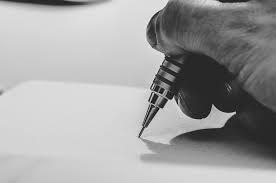Do shutter speed and aperture work together?
IMPORTANT: Changing the shutter speed also affects motion blur . NOTE: There is a reciprocal relationship between shutter speed and aperture. Essentially, using a fast shutter speed with a wide aperture can provide the same amount of light to the image sensor as when using a slow shutter speed with a narrow aperture.
How do you use aperture and shutter speed together?
To get the correct exposure, you need to slow down the shutter speed by two stops to 1/50th of a second. With the aperture value two stops higher (f/16) and the shutter speed two stops lower (1/50th sec) your photo will be perfectly exposed just as it was at f/8 and 1/200th sec.
What does the combination of aperture and shutter speed affect?
Going from f/4 to f/5.6 (one full stop) decreases the size of the aperture opening, cutting in half the amount of light that reaches the camera’s sensor (or film). Conversely, slowing shutter speed by one stop doubles the amount of time the shutter is open, thus letting in more light.
What is the proportional relationship between aperture and shutter speed?
Shutter speed and aperture are inversely proportional to one another. This means that both shutter speed and aperture must be balanced in order to your images to have ideal exposure. As you increase your aperture, shutter speed must also be increased, in order to balance out the overall capture of your scene.
How is shutter speed calculated?
So if you are shooting with a 500mm lens, you should set your shutter speed to 1/500 or higher. If you are using a DSLR that has a crop factor you have to multiply by the crop factor. For example most Nikon SLRs has a 1.5 crop factor – for the example above you will to set the shutter speed to 1/(500*1.5) = 1/750.
Is F stop shutter speed?
F/stop exercise. Keep in mind that f/stops, shutter speeds and film/digital sensor speeds are nearly always related by precisely half or double. That is, changing your f/stop from, say, 4 to 5.6 (one stop) is the same as changing your shutter speed from 125 to 250. Each lets in half as much light.
What is a good shutter speed for a camera?
If you want a brighter photo, use a longer shutter speed. It doesn’t have to be all the way to 30 seconds, either. Even something like 1/100 second or 1/25 second works well most of the time, and will give you a bright enough photo.
How do you explain shutter speed?
The faster the shutter speed, the shorter the time the image sensor is exposed to light; the slower the shutter speed, the longer the time the image sensor is exposed to light. If you are photographing a subject that is in motion, you will get different effects at different shutter speeds.
What is the relationship between shutter speed and aperture?
Relationship Between Shutter Speed and Aperture: They are both inversely proportional to one another. In simpler terms the two have to be balanced to ensure an image is not over exposed or underexposed to light. When the aperture is widened the shutter speed is increased to balance it out and visa versa.
How do you calculate shutter speed?
Move the dial left or right/ arrows up or down depending on the shutter speed you want. The shutter speed format is usually in 1/1000, 1/250, 1/30, etc. The higher the bottom number, the faster your shutter speed. Shutter speeds are measured in seconds.
What is the fastest possible shutter speed?
On most cameras, the fastest possible shutter speed is either 1/4000th of a second or 1/8000th of a second. At this end of the range, you’ll freeze even fast-moving race cars in place.
What should I Set my shutter speed to?
The longer the shutter is open the steadier your hand should be to avoid blur. The rule of thumb is that the shutter speed should be 1/[Focal Length]. So if you are shooting with a 500mm lens, you should set your shutter speed to 1/500 or higher.
